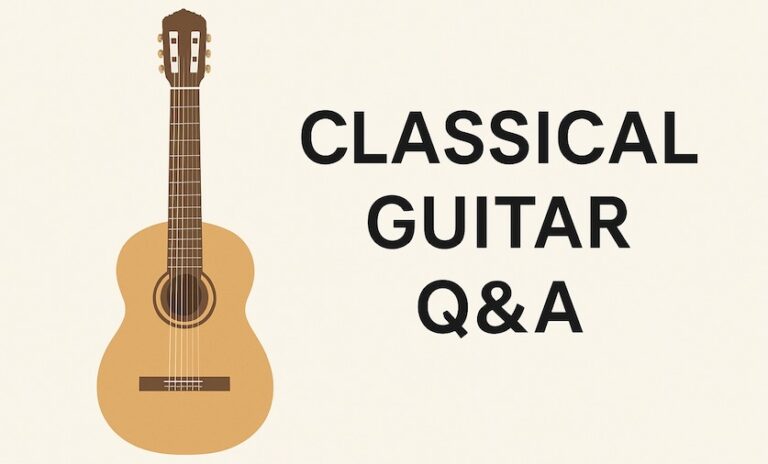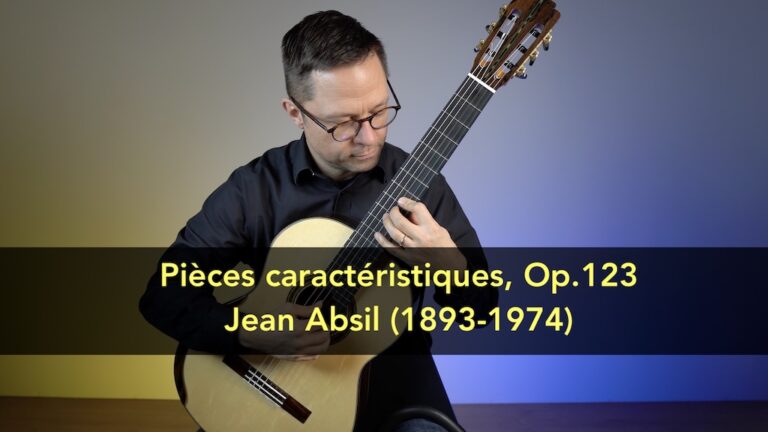A Lesson on Using Repetition in Music Practice. In this lesson I cover a variety of ways to approach using repetition during your practice sessions. The main point is that you need to approach repetition with critical thinking and listening skills. The difference between playing and practicing with repetition is that practicing is problem solving. You are aiming to improve each time your repeat something rather than just playing the same thing over and over and hoping for the best. Repetition is necessary but it must be approached in a thoughtful way.
Topics and Video Times
- 00:00 – Intro & Advice
- 1:00 – Playing VS Practicing
- 1:58 – The importance of Technique Practice
- 3:02 – Improving and Stimulating Practice Sessions
- 3:58 – General Tips for Repetition
- 5:44 – Muscle Memory
Approaches to Repetition
- 8:07 – Tempo Variation
- 10:33 – Rhythmic Variation
- 11:31 – Deconstructing the Texture
- 15:39 – Destination Points
- 18:24 – Dynamics, Articulations, Techniques
- 20:35 – Form, Section, Phrase, Motif, Note by Note
- 22:20 – Final Conclusions and Advice
Repetition in Music Practice
Playing Versus Practicing – Practicing is different than just playing the guitar. Practicing is problem solving. When you practice you need to identify problems or elements you wish to improve and solve them immediately. Simply playing the guitar will not make you a better musician. You need to approach repetition with critical thinking and listening skills and improve upon each new repetition. You can use the approaches listed further down the page to help.
The Importance of Technique Practice – Many issues we try to improve during repetitive practice might be better accomplished during daily technique routines. Practicing a well rounded technique routine is similar to practicing all repertoire. It can really help reduce the amount of time we practice our pieces as our hands will be ready for anything.
Repetition with Varied Approaches will Stimulate Practice Sessions – Repeating the same thing over and over is not only boring but it doesn’t help much. Having a variety of approaches to repetition will stimulate your practice sessions while also improving your playing (both musically and technically). Play it differently to re-engage with the music. For extremely difficult sections I’ll even turn a passage into a jazzy little line and make a game out of it. I need it to be fun and my technique and musicality to be flexible as well as confident.
General Tips for Repetition – Each time you repeat something in practice, it should be better than the last time. I know it doesn’t always work out that way but that is the goal. Only repeat something as long as you can concentrate and physically play at a high level. Repeating something 100 times and getting more and more tired and sloppy each time will not help you improve.
Muscle Memory – Every time you play something your muscles are remembering what you did, it’s incredible. Consider this very common scenario: The student practices a passage nine times poorly and on the tenth try they get it correct, congratulate themselves, and stop. They feel good because each repetition got a little better and they arrived at correct playing. However, in terms of muscle memory they just played the passage poorly 90% of the time and correct 10%. The muscle memory is 90% wrong (I’m exaggerating but you get the idea). The student would be better to have played slower and had more correct repetitions. Maybe they played the passage twenty times and made sure fifteen of the times were correct. Regardless, you want to flip that ratio around as much as possible. Also see the approaches below that will help break up the repetition.
Approaches to Using Repetition in Music Practice
Tempo Variation – Practice super slowly so you can play well more of the time. The more you play well the better you’ll play in the long run. When learning or practicing entire pieces, I start from an ultra slow tempo moving to a faster one, one metronome notch at a time. However, I’ll also experiment bringing easier phrases up to speed to hear what the musicality will be like and the practicality of the fingering I’ve chosen. However, it really depends on the difficulty of the piece and how much I’ve prepped it.
Rhythmic Variation – Try the passage with a different rhythmic scheme. This will help break up the repetition and also expose your strengths and weaknesses. I often use dotted figures so some notes are faster which helps expose weaknesses in my technique. It helps make your technique flexible and also stops you from playing with blind muscle memory, you’ll have to engage with the passage in a fresh way.
Deconstructing the Texture – This might be the most important of all the tips. Break down the passage into different elements to either improve them separately or gain insight into the music or techniques involved. If there is more than one voice you can play the voices separately (bass voice alone, melody alone, etc). You could play just the chords in a passage (turn the arpeggios into solid chords or reduce the melody to its basic harmony). You might play up to a rest and see if you are actually muting all the sound. See the video for explanations on this.
Destination Points – I love using destination points in practice and in my teaching. Sometimes we just blaze through a phrase and don’t give each note much attention. By picking a note as a destination to end on you can see if you can confidently reach that note with good technique, positions, good musicality, and a confident sound. It could be each note in a passage which builds security on every note, or maybe just the first note of the next phrase. You’ll be surprised how many weaknesses you’ll find if you stop in the middle of the phrase and check your hand positions and tone quality of a single note.
Dynamics, Articulations, Techniques – You can also practice using varied dynamics or articulations. This will help build flexibility and interest into a passage as well as give you ideas for musicality. Try a passage staccato to prepare each right hand note, or try using slurs or no slurs to see if there is a problem or benefit. Sometimes I’m so focused on playing a slur well that I miss a bad hand position or inaccuracy. This is just as important for your musicality as it is for your technique exploration.
Form, Section, Phrase, Motif, Note by Note – Repetitive practice should also expand and contract in your practice session. Maybe you start with playing one note to the next over and over. Then the motif, then the phrase, then the whole section. Connect all your repetitions together to make sure there is confidence in each element.
Thanks for reading. You can visit my Support Page if you enjoy these lessons and want to help out. Here’s the YouTube link if you want to watch the video there.





This lesson reminds me of something an instructor told me long ago: Don’t practice until you get it right. Practice until you can’t get it wrong.
I just finished listening to this for the second time and have bookmarked it for future reference. This reinforces what the instructor I found has been empathizing and what I picked up by painful trail and error before I started taking lessons. I am trying to become more efficient in practice in an effort to “master” an exercise in Julio Sageras Book 1 and move on to the next one more quickly. They are getting harder! I use this website as a resource for material (both free and purchased). I read the weekly newsletter every week. Keep up the excellent work Bradford Werner! Wish I was nearer than the many thousands of miles I am. Fortunately I found an excellent instructor who took me on as a private student in addition to his duties in the music department of the university here teaching classical guitar.
Quick fingering question if I may:
You use c and not a to play D; something that also appears in your instruction books. In the video, it leads to a hand shift to play A with i as the hand is not as spread out.
Do you have any “rule” for the use of c or is it just a matter of opportunistic convenience? And do you use this only on the lower frets?
Thank you.
And by the way, the way you teach is impressively compassionate, efficient, and a pleasure to follow. Thank you again.
Just for clarification, in the left hand we use numbers for fingering (1, 2, 3, 4) and the right hand letters (p, i, m, a). I do have a video about the 4th finger use in first position: https://www.thisisclassicalguitar.com/lesson-using-4th-finger-beginners/
As a complete novice and a relative youngster at 68 I found your advice very valuable particularly the different techniques for getting it right especially the need to use critical thinking/analysis. Thanks.
Will you listen to you two. I’m 75 and am now studying the guitars as never before. You comments made me smile. As for Bradford, the absolute best fit teacher I have found.
David Owen, Richard and David. I’m 71 and been playing the classical guitar style of music for the past 9 years. I love playing, and I try to play everyday for at least an hour. I find playing the guitar is very relaxing, and tends to open up my mind to think differently (after all we are using both sides of our brain when studying/playing music). My issue is that I’m never satisfied with my playing. I brought this up with a number of musicians and they feel the same way. Playing music is a constant challenge. When we think we “Got It”, we find something about the music, our technique, etc. that we can improve. I consider playing the guitar a constant journey. Bradford is an excellent instructor. His mannerism in teaching various segments of playing is outstanding. Good luck gentlemen.
This discussion is helpful, especially for me. I’m 74, and am intermediate level player.
Very useful lesson. I was talking about this very topic with my teacher this morning. I am 73 and returning to classical guitar after many years away from it. Thank you.